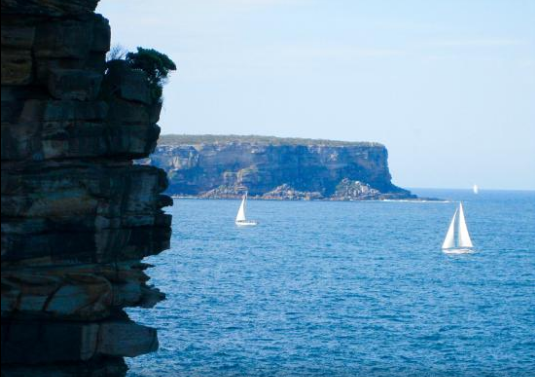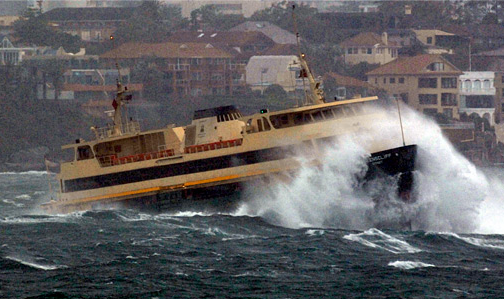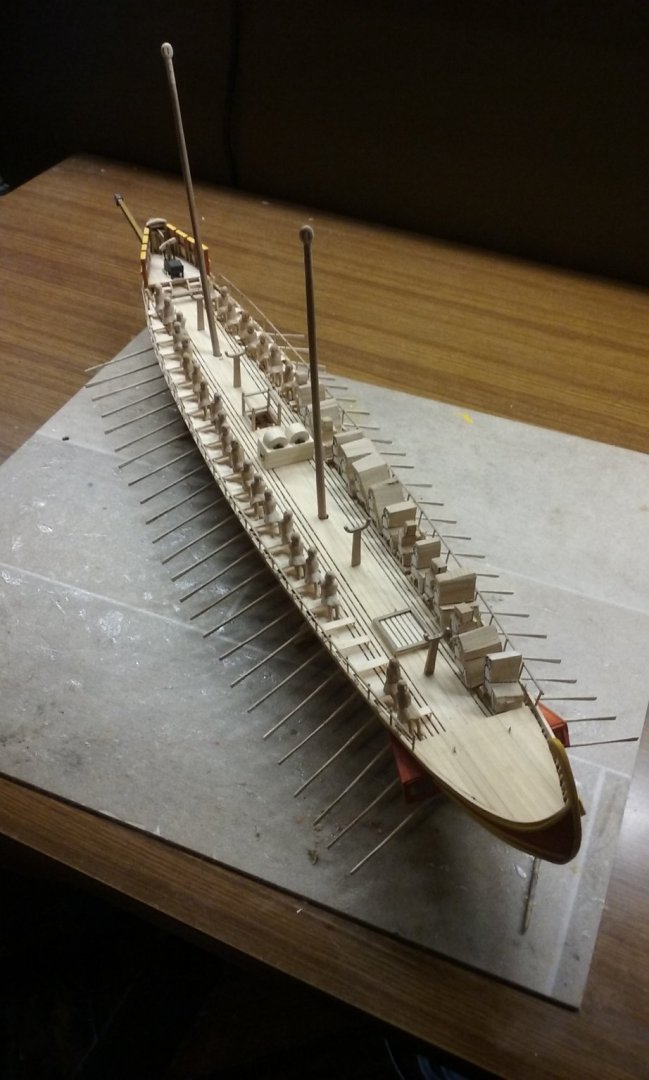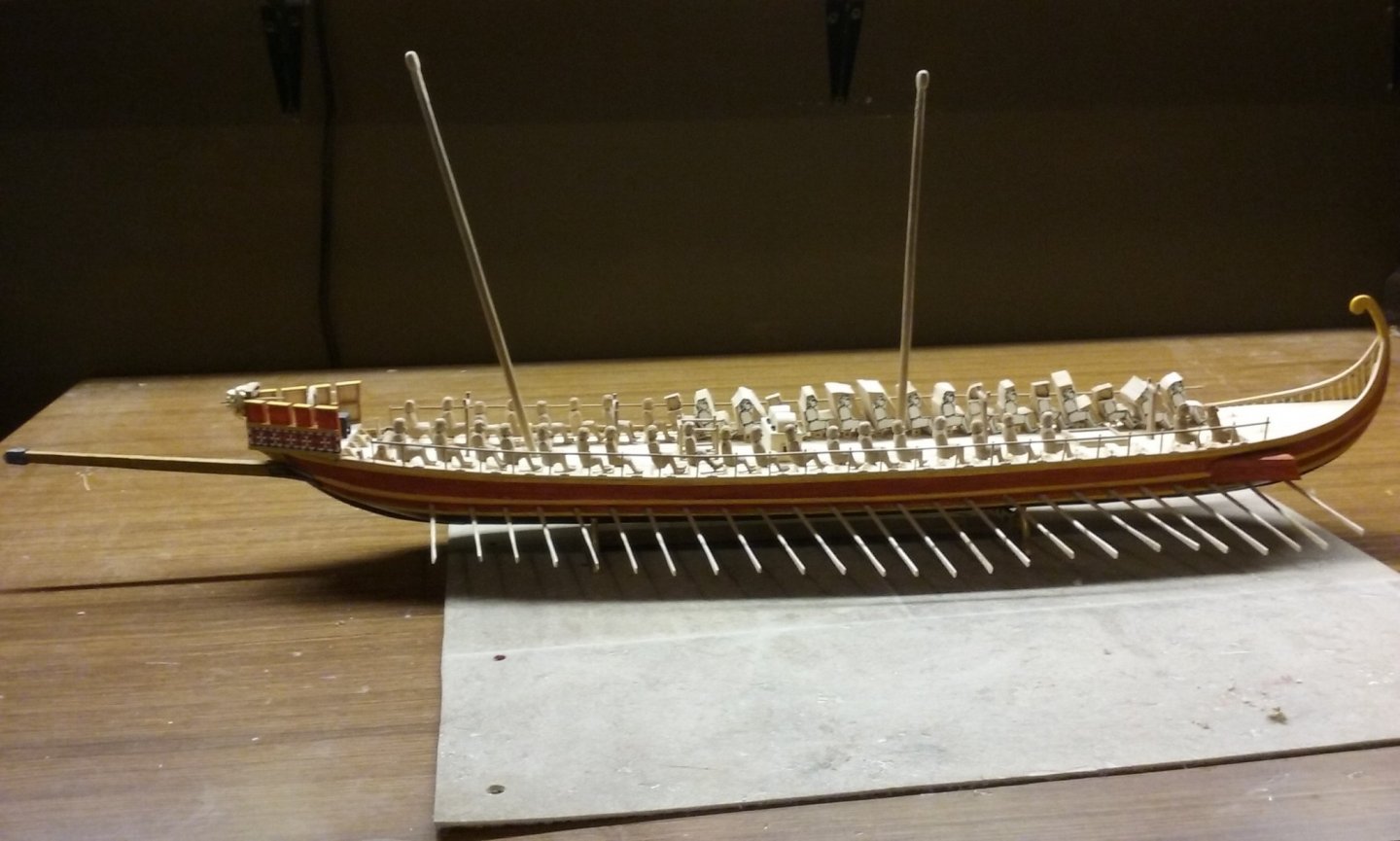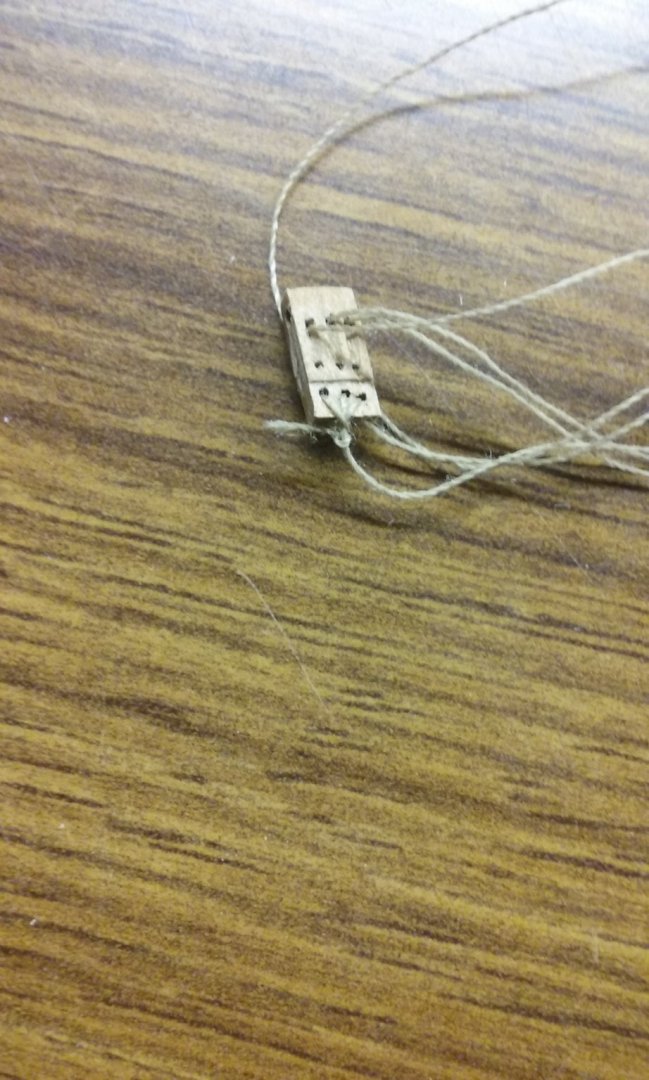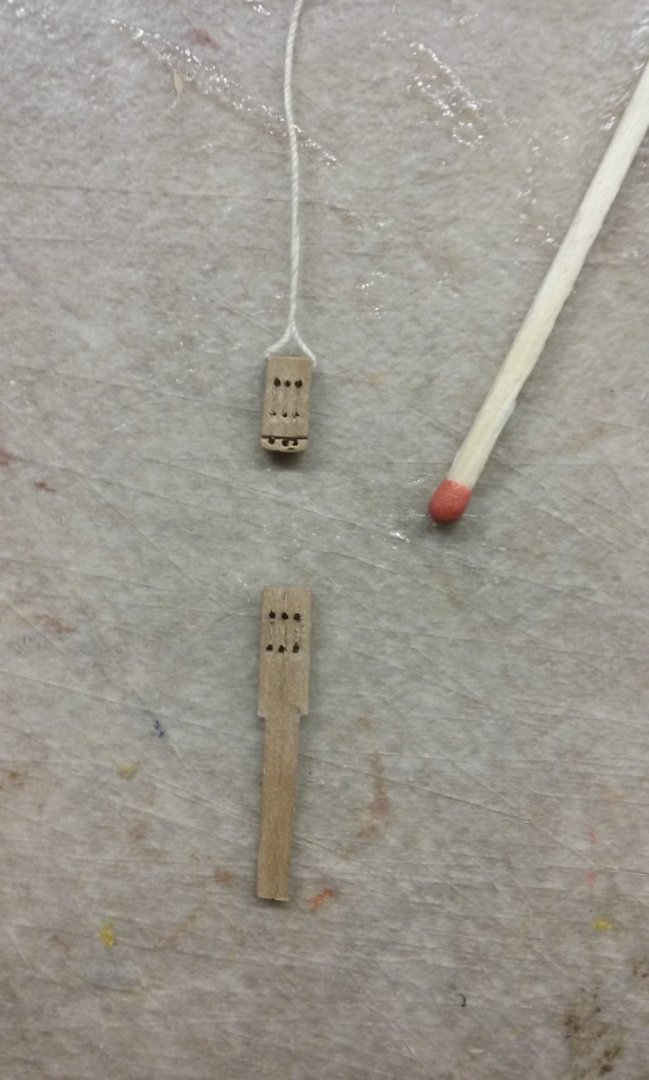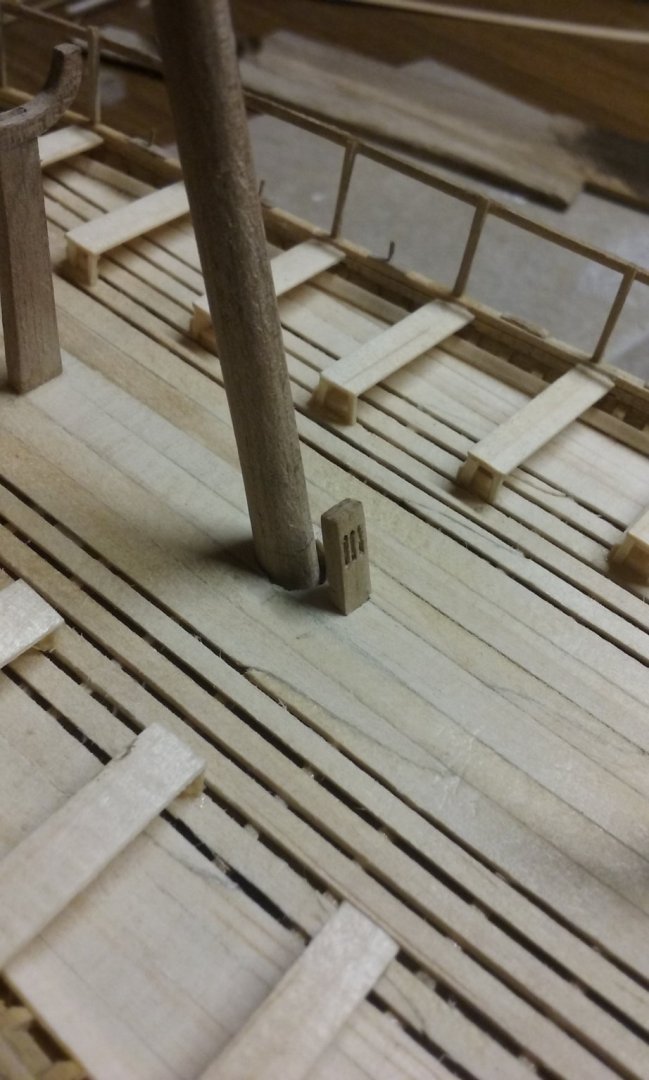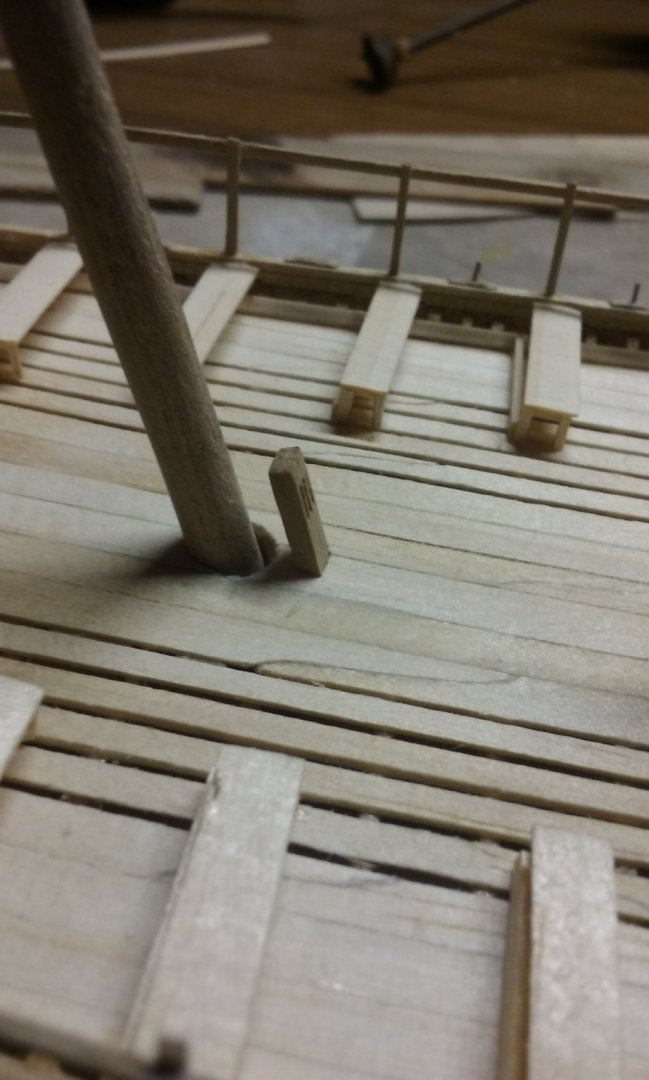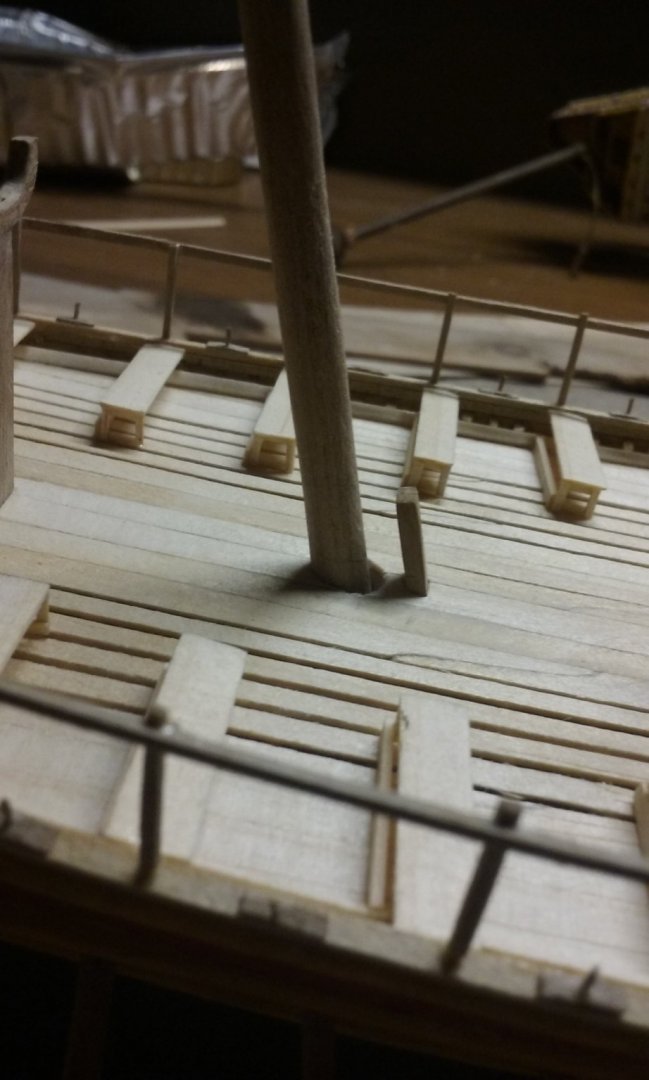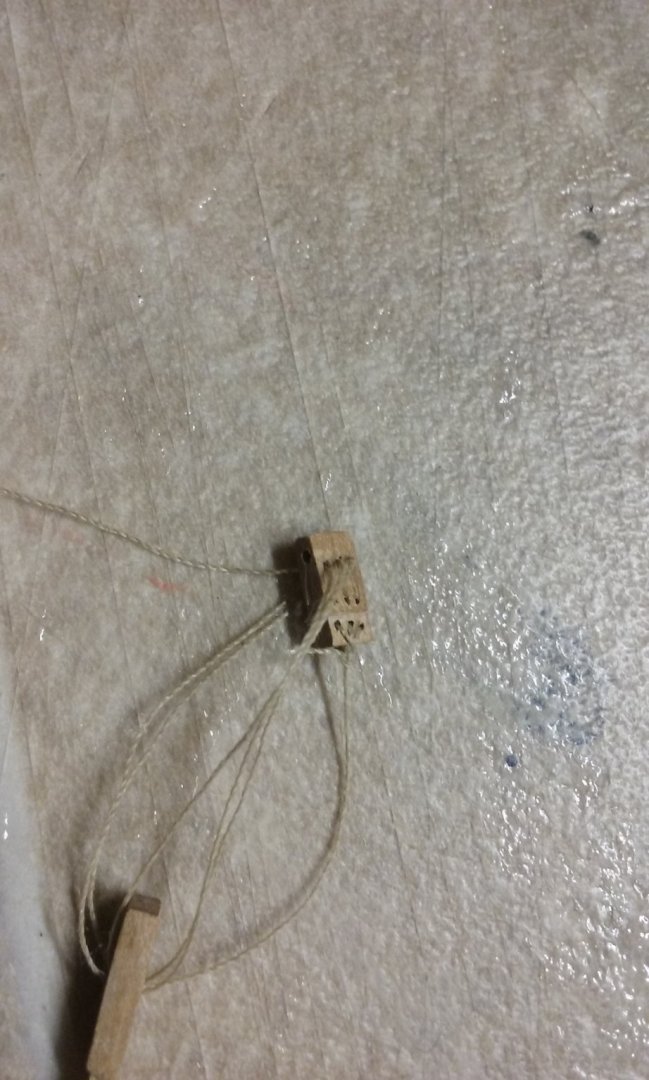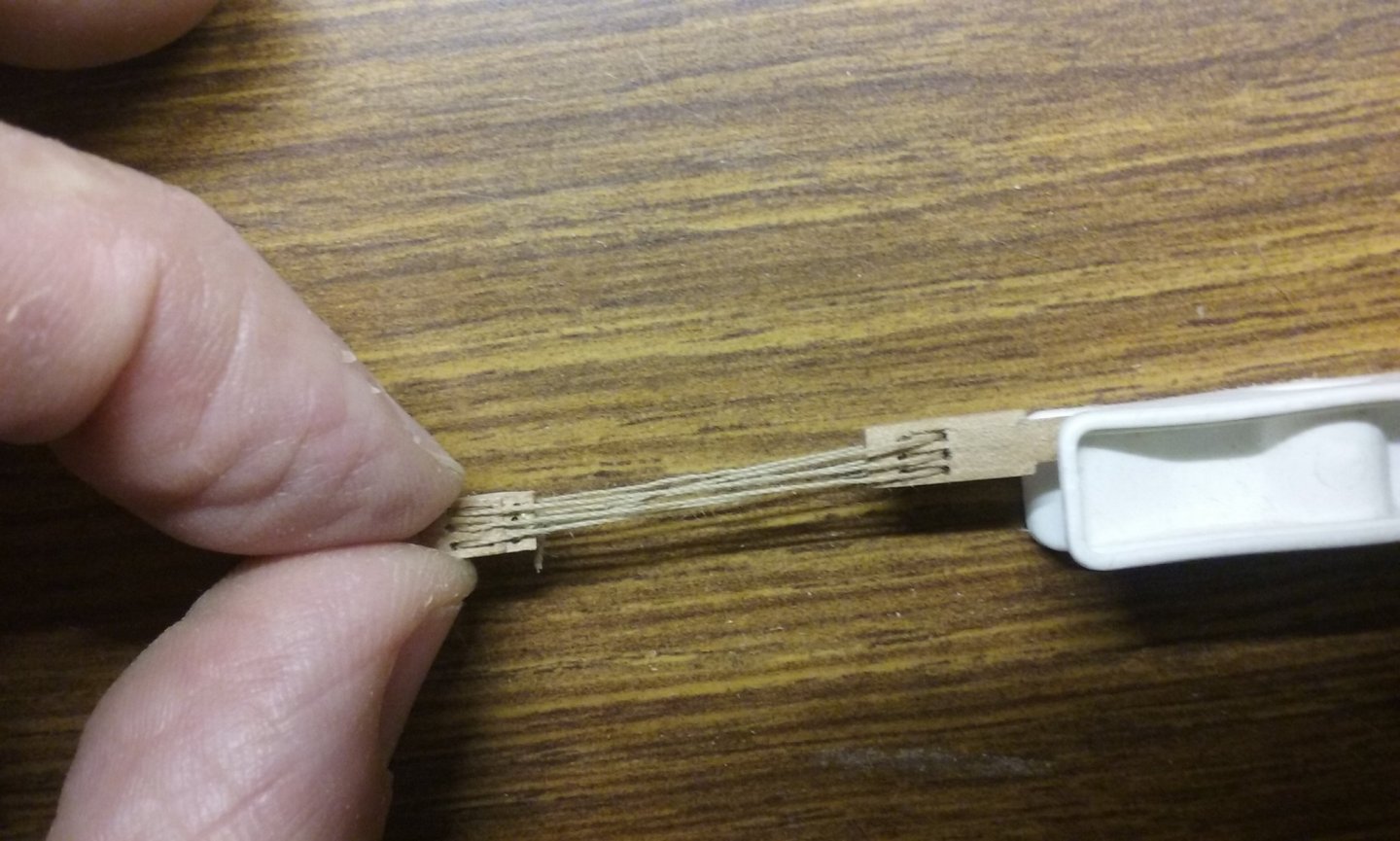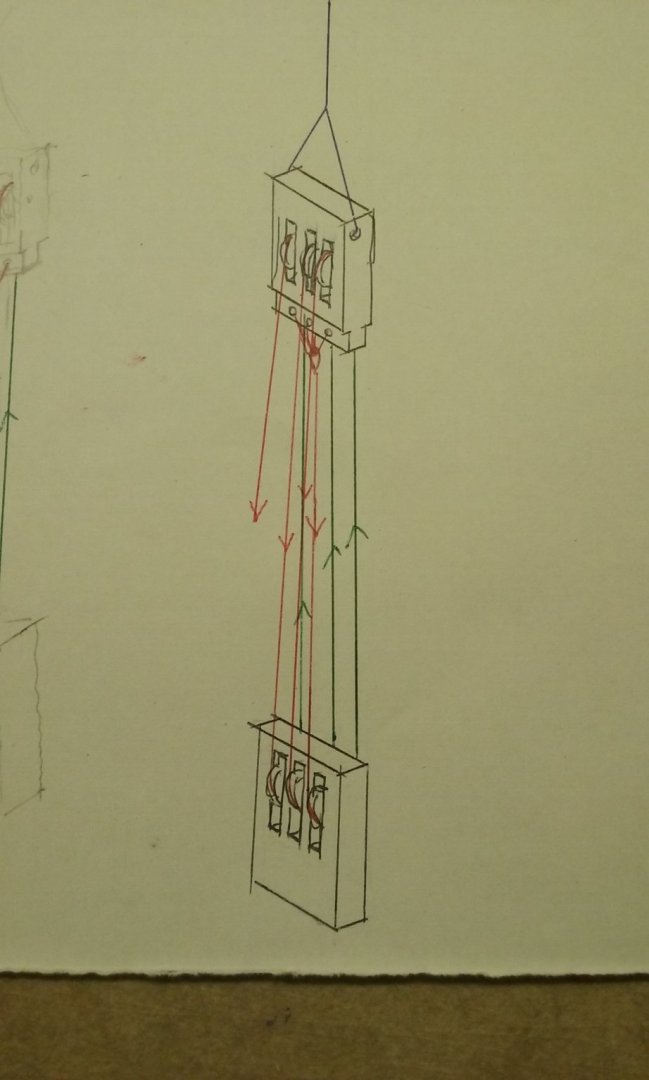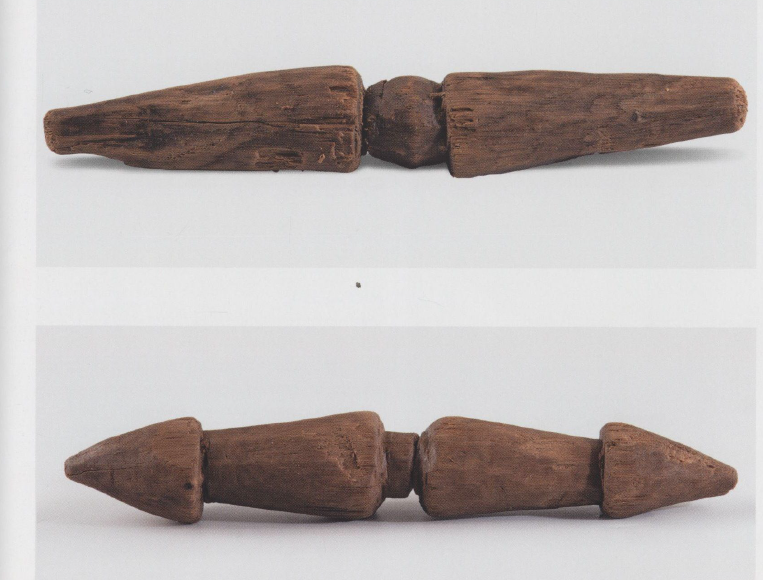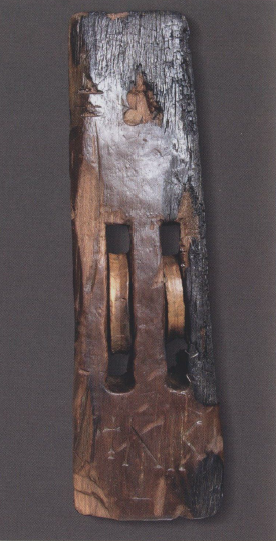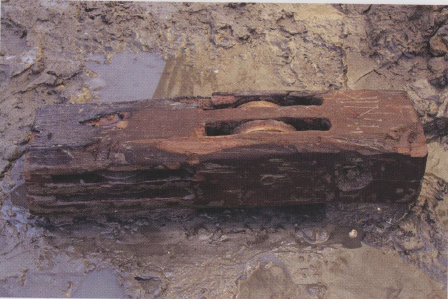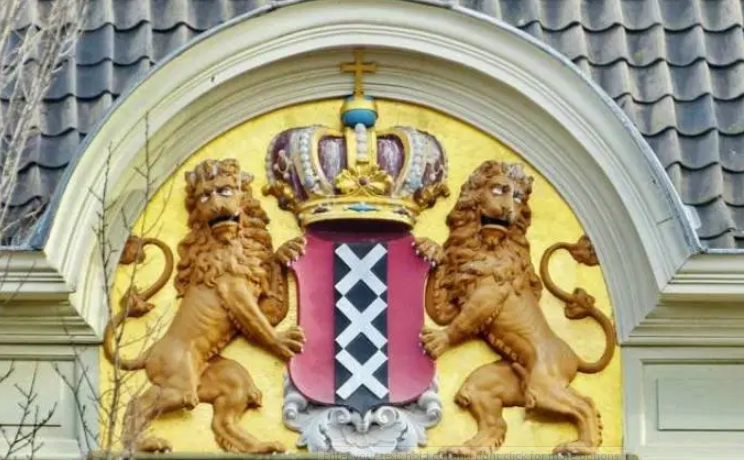-
Posts
7,985 -
Joined
-
Last visited
Content Type
Profiles
Forums
Gallery
Events
Everything posted by Louie da fly
-
That's interesting, Mark. I know you do a fair bit of sailing and your input regarding the practical aspects is very valued. Last time I did any sailing at all was - let me see - just under 40 years ago - and that was a disaster. I forgot everything I'd learned in Sea Scouts and got stranded out on the bay at Port Stephens. Very embarrassing. I only just avoided having to be towed back to shore by a paddleboat, which would have been the ultimate humiliation. Steven
-

ancre Belle Poule 1765 by j.guydal
Louie da fly replied to j.guydal's topic in - Build logs for subjects built 1751 - 1800
Looking very good, Jacques! -
A nice (possible) solution to the mystery, and nicely carried out. Steven
- 81 replies
-
- egyptian
- byblos ship
-
(and 1 more)
Tagged with:
-
I've been on the forecastle on a Manly ferry in this kind of sea - absolutely exhilarating! (I got soaked, though). Dammit! I've derailed my my own thread again! Back to your scheduled programme . . . Steven
-
Mark, it's important to remember when this statue was carved. Knowledge of Roman artefacts was very limited and mainly confined to antiquarians. Bellona's equipment would almost certainly be more influenced by Renaissance and Rococo "pseudo-Roman" than by actual Roman examples. No pilum, no Roman gladius. The spear, I'd suggest, would be very much like the one in your last picture. As someone who's used a shield in (re-enactment) combat, I'd recommend she hold it higher, to cover the chest. On the other hand, the guy who carved her wouldn't have had the benefit of that kind of experience, and I'd think he'd be more interested in an artistic-looking composition than belligerent (there's that root-word again!) practicality. I'd say where the figurehead on the 1760 ship model can't help, the Straub statue would be a good model to follow as it's very closely contemporary with the ship itself. Steven
-
I should have known it would be Cog . . . Here are Sydney's heads! You can see why Captain Cook completely missed Sydney harbour - the land behind the entrance makes it look like a minor indentation in a continuous coastline. Here's a closer shot of the heads. And a ferry crossing the heads to get to Manly on the other side -or perhaps coming from Manly . . . Steven
-
I think this is appropriate - Rose Bay is a waterside suburb on Sydney Harbour. Lots of commuters travel to Sydney on the ferry - turning left (to port) ends up at Circular Quay right by the City centre (just under the harbour bridge, next to the Opera House). Turning right (starboard) takes you through the heads and out to sea . . . Steven
-
Just an update on the progress of carving the oarsmen. Three missing on the port side* - they're the guys without a bottom half, currently being glued together. Twenty-one carved for the port side, of which two still need to be sanded smooth. On the starboard side eight carved to shape and 16 still only rough sawn. I knew ship modelling was supposed to develop patience, but sheesh! * Which reminds me of the passenger on a steamer in the Mediterranean travelling east, who asked where the bathroom was, and the steward said "Port side" - to which he replied "I can't wait that long!" Steven
-
Hi Bear and Chidokan, as far as I'm aware very little of the cordage from the Mary Rose has survived - certainly there's very little mention of it in any source I've been able to find. I know some of the boarding netting still exists, but apart from that, nada. IF the attached photos show actual surviving carriages for the bronze guns of the Mary Rose, as I think they do (and these are two different guns with what appear to be identical carriages), there are certainly possible attachment points for the tackle. But I think how it was arranged is mostly a matter of educated guesswork - and there's nobody around who could tell you your reconstruction was wrong (not any more, anyway; they went down with the ship). By the way, those large cart-wheels on the built-up gun look like a land-based gun was dragooned into serving on board ship. Those wheels seem much more suitable for horse-drawn artillery. Or maybe , as the Lomellina wrecked in southern France in 1516 certainly was, she was carrying the gun as cargo. Steven
-
Looking really good, Chris. It's amazing how tubby cogs were. Bjorn Landström's reconstruction in his book The Ship (published way before any archaeological discoveries, and based almost entirely on side views from town seals) shows a much sleeker vessel. Nowadays there's so much more information available. A model cog made "back in the day" would look completely wrong nowadays (though rather more attractive). Steven PS: I just looked up Wütender Hund in Google Translate - it means "angry dog". Good name.
- 179 replies
-
- shipyard
- wütender hund
-
(and 1 more)
Tagged with:
-
Well, rather appropriate, since dromon does mean "runner" (as you're obviously already aware)! Though in mediaeval Greek it would probably be pronounced something like Neekee . . . Steven
-
Just an extra bit regarding the three "unexplained" holes. One comment during last June's discussion above (can't find it at the moment) suggested that those holes would be easily pulled out (broken) if any decent load was imposed on them. However, if my maths is correct, there are seven lines in the tackle, so each line takes one seventh of the load pulling on the halyard. So each line attached to the triple hole takes one third of that one seventh = one twenty-first of the total load. So, though the load on the halyard would be pretty large, that on each hole would be reasonably small. Which is why I put the holes at the bottom of the block as part of the tackle, rather than at the top, where they'd each take 1/3 of the total load on the halyard. Here's a rather clearer photo showing the attachment to the triple hole (I haven't trimmed off the loose end yet - it needs to be cut short). Druxey, that shoe block is very interesting. At the moment I've no idea how it would be used, but combinations of blocks and their tackles aren't my strong point - I have to sit down and laboriously draw them out to have any chance of understanding them - and at the moment I don't really need to find a use for it. By the way, you might notice an inscription on the block. It's NIKA - Greek for "Victory". Steven
-
Don't do it, Pat! Well, not for a galley, anyway. It takes a special kind of insanity to build a model of a galley - ask anyone who's done it . . . Thanks everybody for the likes and encouragement (greatly needed at the moment - 7 figures carved for the starboard side, leaving 17 sawn roughly to shape who need carving, plus another 3 that are only there from the waist up, who need some "bottom". And then I have to smooth them off, make their arms, paint them . . . ). So in my spare time [bitter laugh] I've been working on the knights for the halyards. Here's the first one dry fitted. As you can see it follows the rake of the mast. And now that I've been thinking about the halyard and how it will all work, I think I've figured out the modus operandi of the triple sheaved block with the unexplained three extra holes (see posts 829 and 833-836 and discussion, from June 14-15 2019 This diagram shows (I hope) how it all works. That's the knight at the bottom, the red line on the far left is the downhaul, and the connection to the halyard itself goes through the transverse hole at the top. By the way, from my observations of lateeners still in operation, the line to the halyard will be connected with a quick-release toggle, which is found over and over in Byzantine maritime archaeology. Here are the knight and the block together showing their approximate respective positions: And here is the block with those three holes supporting the first line down to the knight (I've moved the other lines off to the side for clarity). And here they are together. I have yet to make the second pair, for the after mast but I think that's going to work. Finally, back in June 2019 I promised pics of a block with sheaves at right angles to each other and never came good with them. So here they are (2 pics of the same block): Source: Istanbul: 8000 Years Brought to Daylight; Marmaray, Metro, Sultanahmet excavations, and Stories from the Hidden Harbour - shipwrecks of Yenikapi, both published by the Istanbul Archaeological Museums Steven
-
I know where you're coming from, David. It seems you always have to be thinking ten steps ahead if you want to avoid painting yourself into a corner. And we don't actually know the colour scheme of the real Batavia. What they have on the full-size reconstruction is based on educated guesswork. But what you're doing looks very good indeed. I assume the stern decoration you referred to was the coat of arms of Amsterdam? Steven
- 136 replies
-
- kolderstok
- batavia
-
(and 1 more)
Tagged with:
-
Got it, Druxey. Thanks. Though somehow I doubt I'll be able to get the planking as good as in the photo. Steven
- 740 replies
-
- Tudor
- restoration
-
(and 4 more)
Tagged with:
About us
Modelshipworld - Advancing Ship Modeling through Research
SSL Secured
Your security is important for us so this Website is SSL-Secured
NRG Mailing Address
Nautical Research Guild
237 South Lincoln Street
Westmont IL, 60559-1917
Model Ship World ® and the MSW logo are Registered Trademarks, and belong to the Nautical Research Guild (United States Patent and Trademark Office: No. 6,929,264 & No. 6,929,274, registered Dec. 20, 2022)
Helpful Links
About the NRG
If you enjoy building ship models that are historically accurate as well as beautiful, then The Nautical Research Guild (NRG) is just right for you.
The Guild is a non-profit educational organization whose mission is to “Advance Ship Modeling Through Research”. We provide support to our members in their efforts to raise the quality of their model ships.
The Nautical Research Guild has published our world-renowned quarterly magazine, The Nautical Research Journal, since 1955. The pages of the Journal are full of articles by accomplished ship modelers who show you how they create those exquisite details on their models, and by maritime historians who show you the correct details to build. The Journal is available in both print and digital editions. Go to the NRG web site (www.thenrg.org) to download a complimentary digital copy of the Journal. The NRG also publishes plan sets, books and compilations of back issues of the Journal and the former Ships in Scale and Model Ship Builder magazines.



